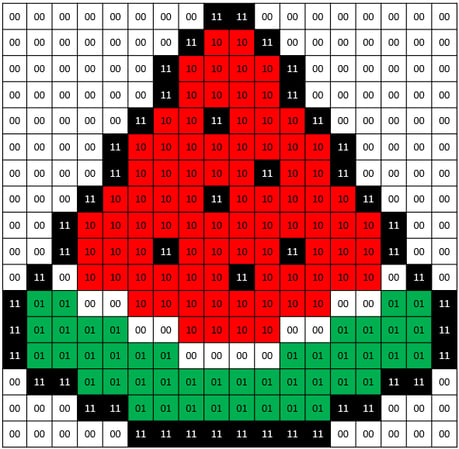Pixels
What is a bitmap?
- A bitmap image is made up of squares called pixels, meaning picture elements
- A pixel is a single point in a image
- Each pixel is stored as a binary code
- Binary codes are unique to the colour in each pixel
- A typical example of a bitmap image is a photograph

- The more colours and more detail in the image, the higher the quality of the image and the more binary that needs to be stored






